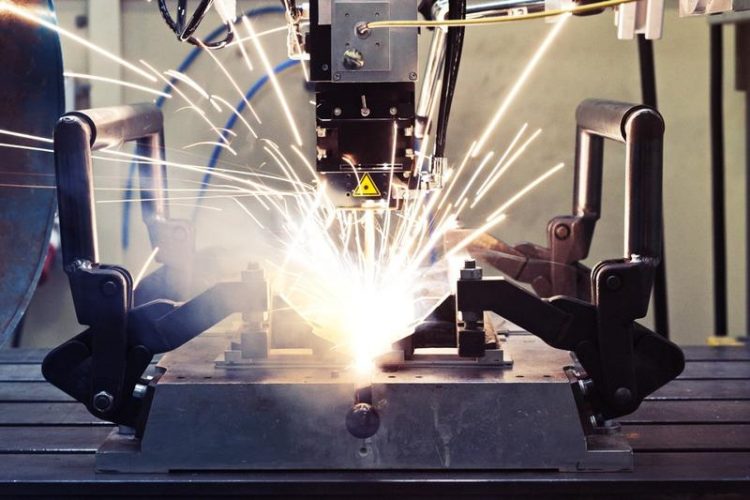Lighter with Laser Welding

Laser welding of steel and aluminum. Photo: LZH
One of the challenges in welding steel with aluminum is to avoid hard and brittle intermetallic phases in the welding seam. These phases can occur easily, since iron and aluminum do not combine well. The goal of the scientists at the LZH and their partners in the project LaserLeichter, is to control the welding process as much as possible. Therefore, different measuring methods will be assessed.
Establishing control during and after the running process
For one, the engineers will be testing a spectroscopic control of the welding depth, which measures the emissions of the plasma. During the ongoing process, the composition of the plasma indicates the welding depth, and allows to adapt the laser output accordingly.
This control is already being evaluated at the LZH for flat welds, and will now be expanded to three-dimensional structures. Since the distance between the process zone and the measurement sensors inevitably changes in the course of the process, detecting the plasma emissions accurately is difficult. For optimal measurements, the spectrometer will be integrated into an innovative, scanner-based processing head.
Also, the scientists are testing a sensor made by the project partner Precitec GmbH & Co. KG, which can directly measure the depth of the keyhole (vapor capillary). Additionally, they are examining a thermal imaging process of the InfraTec GmbH, as well as a trailing nondestructive sample analysis using active thermal imaging from the inpro Innovationsgesellschaft für fortgeschrittene Produktionssysteme in der Fahrzeugindustrie mbH (inpro).
The processes developed within the project are tested directly on demonstrators for the automotive industry, for example on a car body element or a battery case.
Apart from the LZH, Precitec GmbH & Co. KG, InfraTec GmbH and inpro, the following companies are working together in the joint project „Development of a laser-based joining technology for dissimilar lightweight constructions” (LaserLeichter): Volkswagen AG, Scherdel Marienberg GmbH, MATFEM Partnerschaft Dr. Gese & Oberhofer, LUNOVU Integrated Laser Solutions GmbH, Brandenburg University of Technology, and Fraunhofer-Institut für Werkstoff- und Strahltechnik (Fraunhofer IWS). Associated partners in the project are TRUMPF Laser GmbH, ASTOR Schneidwerkzeuge GmbH, ThyssenKrupp Steel Europe AG, Bond-Laminates GmbH and Sapa Aluminium Profile.
The joint project is coordinated by the Robert Bosch GmbH, and the project management organisation is the VDI Technologiezentrum GmbH. LaserLeichter is financed by the Federal Ministry of Education and Research (BMBF).
LaserLeichter is a joint project within the association „Photonic Processes and Tools for Resource Efficient Lightweight Construction“. This association is coordinated by the LZH and financed by the BMBF.
Media Contact
More Information:
http://www.lzh.de/All latest news from the category: Process Engineering
This special field revolves around processes for modifying material properties (milling, cooling), composition (filtration, distillation) and type (oxidation, hydration).
Valuable information is available on a broad range of technologies including material separation, laser processes, measuring techniques and robot engineering in addition to testing methods and coating and materials analysis processes.
Newest articles

Innovative 3D printed scaffolds offer new hope for bone healing
Researchers at the Institute for Bioengineering of Catalonia have developed novel 3D printed PLA-CaP scaffolds that promote blood vessel formation, ensuring better healing and regeneration of bone tissue. Bone is…

The surprising role of gut infection in Alzheimer’s disease
ASU- and Banner Alzheimer’s Institute-led study implicates link between a common virus and the disease, which travels from the gut to the brain and may be a target for antiviral…

Molecular gardening: New enzymes discovered for protein modification pruning
How deubiquitinases USP53 and USP54 cleave long polyubiquitin chains and how the former is linked to liver disease in children. Deubiquitinases (DUBs) are enzymes used by cells to trim protein…



